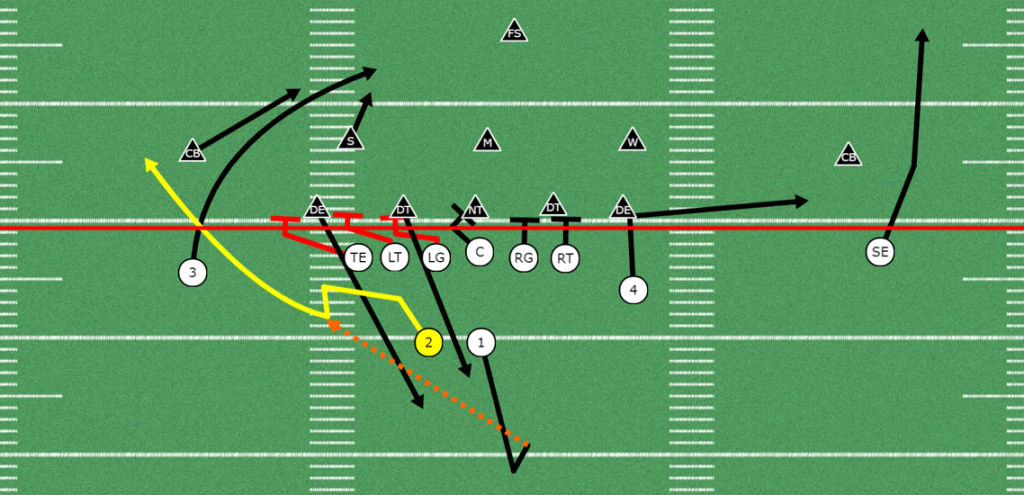There is no single play that’s more effective for slowing down the defensive pass rush than the screen. Whether the screen is thrown to the Running Back, Tight End or a Receiver, it exploits the aggression of the defensive line and leaves the screen man with the ball and three lead blockers.
Easy Rules for the Running Back Screen
Many teams stay away from the screen because they think it is too difficult to practice. The key, like any play, is to have clear consistent rules for the Offensive Line. These rules can be manipulated to multiple positions to run the screen. The result is a package of screens that looks very multiple to the defense where the offensive line only has one set of rules to master.
The rules for the screen are pretty straight forward. The Tackles will take a pass set and get beat to the outside. The call side Guard is responsible for setting a wall to the call side while the Center will be setting the wall on the opposite side. The backside Guard is the Rat Killer.
The Tackles have one of the easiest assignments in football. They will take a pass set and make sure it’s clear to the Defensive player that it is a pass. His goal is to get beat to the outside. If the Defender goes to beat him outside he should take a kick slide to extend the defenders path and give the Quarterback an extra step. If the defender makes a move to the inside it’s critical that the Tackle gets his hands on him. He doesn’t necessarily need to stop him or force him outside but he must slow the defender down enough that the Quarterback will have time to get the ball off.
Related Content: Now Screen from the Outside Zone
The Playside Guard is responsible for the wall on the call side of the field. He will take a short pass drop and get beat either direction. As he clears the defensive lineman he must get his eyes on the playside linebacker. As he approach him and wants to take a path that ensures him inside leverage. Too many linemen go to make a massive block in these situations and then get beat in space by the linebackers. Instead the Guard needs to approach the block in a manner that will guarantee that he does not get beat inside. If he only gets a light hand on the defender but forces him to loop around the screen man should be clear to get to the next level.
The Center is responsible for the wall opposite of the Guard. The key with this block is to have the Center get leverage on the linebacker. Once he has clear the defensive lineman he must get horizontal before attacking the linebacker. If he steps anywhere but directly horizontal the linebacker will be able to keep leverage and make the tackle. Once he has gotten the leverage on the linebacker he can move forward and attack the inside half of the defender.
The backside Guard is the rat killer. The rat killer is responsible for blocking any defensive lineman who reads the screen and peels back to make the tackle. As the Guard clears the defensive lineman he will take two to three steps downfield and turn back towards the Quarterback. He is looking for the first defender that has turned around and has a chance to make the tackle. If no defender reads the screen the rat killer move on to make sure the screen man is able to get to the first two blocks.
An effective screen game can wreck defensive units. By punishing the defenders for their aggressive pass rush the offense can gain extra time in the passing game. In addition, the screen game is an excellent way to change the way you get the ball to your playmakers.
(See Also) Bubble and Jail Screen Drills
